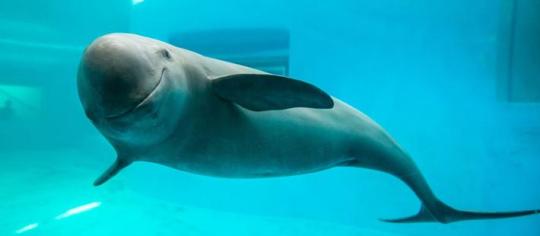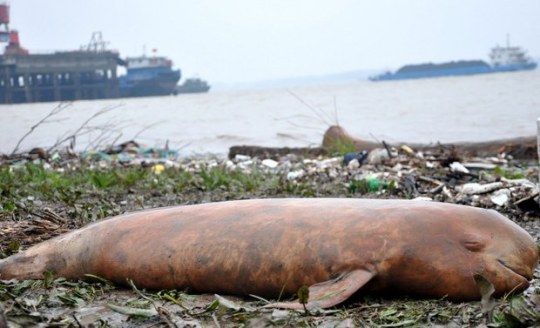Don't wanna be here? Send us removal request.
Text
Giant panda – an example of successful rare species conservation

(99i33zyc0l_Large_WW170579.jpg)
Giant pandas (Ailuropoda melanoleuca) are one of the most popular protected animals in the world. They are also the national treasure of China. They are widely loved for their unique appearance, cute look and gentle nature. Over the past few decades, the giant panda has faced serious threats to its survival and has become one of the species on the brink of extinction. However, through the efforts of global conservation organisations, government departments and scientists, the giant panda's fortunes have been reversed. This article explores the story of the giant pandas and shows how they have been successfully rescued.
The endangered species
Around 1980, scientists declared the giant panda to be on the brink of extinction. Yet it is curious to know why the giant panda, which has no natural predators, has plummeted in population and is about to become extinct.(Zhu et al., 2013)
The earliest speculations that were raised were due to the monoculture nature of the giant panda's diet. Bamboo is the main food of the giant panda, but due to its long growth cycle, bamboo forests are slow to recover. Excessive bamboo harvesting, planting of non-native bamboo species and climate change have all contributed to the scarcity of food resources for pandas, putting them at risk of starvation and malnutrition. Also, as bamboo is mostly grown in China's high altitude mountains. And the deforestation, agricultural expansion, road construction and other human activities made for development in China at the time have severely damaged the natural habitat of the giant panda. These activities have led to the destruction and fragmentation of the giant panda's habitat, affecting their living space and food supply.
Others have suggested that giant pandas are endangered because of their low reproduction rate.(Wei et al., 2015) Female pandas only come into heat for a short period of time each year, and the number of male pandas is relatively low. This makes the breeding process difficult and results in slow population growth in the wild. In addition, the mating behaviour and reproductive success of giant pandas has been affected by habitat destruction and disturbance from human activities.
People blame the demise of giant pandas on their inability to adapt to the environment. Yet the truth is that giant pandas have a high reproductive rate in the wild.(Wei et al., 2015) At this point, it became clear that it was mainly human interference and direct persecution with certain objectives that caused the population of giant pandas to plummet. Environmental pollution, water pollution and climate change have also had an impact on the survival of the giant panda. The accumulation of toxic substances, contamination of water sources and extreme weather events caused by climate change may all have a negative impact on the health and survival of giant pandas. In addition, due to their rare and precious status, giant pandas have been the target of illegal hunting and illegal trade. Despite increased efforts by the Chinese government to combat wildlife trade, there are still some illegal practices that pose a potential threat to the survival of giant pandas.
Conservation measures
In response to these threats, the Chinese government, conservation organisations and the scientific community have taken a number of proactive measures.
The first is the protection and re-siting of habitats. A series of nature reserves and wildlife protection bases have been established in China to provide safe habitats and protected areas for giant pandas. An example is a Giant Panda National Park in Sichuan, the home of the giant pandas, with a total area of 27,134 square kilometres.(Kang & Li, 2019) Strict management and monitoring has been implemented in these areas to ensure that the living environment of the giant pandas is protected and restored. The management of bamboo forest restoration and protection has also been strengthened. This includes limiting bamboo harvesting, promoting sustainable management and planting native bamboo species to increase the food supply for giant pandas.(Wei et al., 2015)
China is also actively working closely with international conservation organisations and the scientific community on giant panda conservation projects and scientific research. The Chengdu Research Base of Giant Panda was established to study the species and habits of giant pandas, and to try artificial propagation of pandas. The research base is also open to visitors, allowing them to learn about conservation while experiencing the loveliness of giant pandas.

Figure 1. Twin giant panda cubs born at China research centre (1,600 × 700)
Finally, the Chinese government has also established a legal framework to prohibit illegal hunting and trade activities. Poachers are not allowed to threaten the safety of wild pandas. Along with rapid economic development, China has also begun to focus on environmental and ecological protection. Recently, China's constitution added ecological civilisation, which will enable man and nature to develop and progress together in harmony.(Kang & Li, 2019)
The future of the giant panda
The future of pandas still faces some challenges, but has a positive outlook. In the future, scientists will attempt to reintroduce pandas back into the wild. Reintroduction is an important way to protect endangered species and prevent their disappearance.(Yang et al., 2018)
At the same time, experts have declared a continued focus on environmental issues. The current threat status of IUCN Red List species does not always mean the same threat in the future under climate change.(Tang et al., 2022) If we let the issue of temperature change go unchecked, the giant panda will once again be threatened with extinction and we humans will be next in line to have survival problems.
Thank you all for reading! If you have any questions or ideas, please feel free to discuss them with me in the comments.

Figure 2. Photo of panda (Panda-facts-3-1.jpg)
0 notes
Text
Saving coral reefs is a matter of urgency

(coral-reef.jpg)
Coral reefs, one of the most valuable ecosystems on the planet, are facing unprecedented threats. However, each of us can play a role and do our part to save the reefs.
The importance of coral reefs
Coral reefs are among the most diverse and complex environments in the marine ecosystem. It is estimated that coral reefs are the habitat for more than 25% of the planet's marine species, even though they cover only about 0.1% of the ocean's surface area.(Moberg & Folke, 1999) They provide habitat for countless species, including fish, marine mammals and other marine life. At the same time coral reefs provide important feeding grounds and breeding sites for these marine organisms, allowing many fish and other organisms to survive. Protecting coral reefs helps maintain the balance of marine ecosystems and protects the survival of other marine life.
Coral reefs also play a vital role in the global marine food chain, providing food and economic opportunities for humans. Many coastal communities depend on coral reef fishing and fisheries as their main source of economy. Coral reef areas account for approximately 10% of the fish caught for human consumption. At least tens of millions of people in more than 100 countries with coral along their coastlines depend on coral reefs for part of their livelihood or part of their protein intake.(Moberg & Folke, 1999) In addition, tourism depends on coral reefs. Taking tourists to see the beautiful landscapes of coral reefs, and other underwater life, brings jobs and economic growth to local communities.
In addition, they protect coastal areas from storms and sea level rise.(Moberg & Folke, 1999) They slow the effects of waves and tidal currents, reducing coastal erosion and storm damage to coastal communities. Coral reefs act as a natural barrier to sea level rise and storm surge impacts.
Finally, the biodiversity of coral reefs provides many important research resources. By studying the organisms in coral reefs, scientists have discovered many new species and have obtained valuable pharmaceutical compounds from them. These compounds have been studied for their potential application in the medical field, where they can be used to produce anticancer drugs and antibiotics, etc.(Cooper et al., 2014)
Threats to coral reefs
The decline of many coral reef ecosystems in recent decades has surprised experienced managers and researchers.(MUMBY & STENECK, 2008) Coral reef ecosystems are now very fragile. A major cause of this problem is human activity. Most of the people living in coastal areas depend on fishing for their livelihoods. But overfishing can upset the balance of coral reef ecosystems. Excessive fishing pressure can lead to a decline in fish and other marine life in coral reefs, affecting the health and ecological function of the reefs. In addition to this, marine pollution also has a serious impact on the health status of coral reefs. Factories built on the seashore release waste, chemicals, agricultural and industrial discharges into the ocean, which can lead to contamination of coral reefs. These pollutants can damage the health of corals and interfere with their growth and reproduction. Finally irresponsible tourism such as trampling, destroying and moving corals, inappropriate diving and snorkelling, overexploitation of coastal areas and irrational coastal construction can cause direct damage to coral reefs.(Moberg & Folke, 1999)
Secondly, the health of coral reefs is also affected by climate change. Global warming causes seawater temperatures to rise and corals become more sensitive to high temperatures. When seawater temperatures exceed a certain level, corals can experience bleaching, where symbiotic algae within the coral are damaged and lose their colour. In addition to high temperatures, coral bleaching can also be caused by factors such as water pollution, ocean acidification, overexposure to sunlight and overfishing. If high temperatures persist for too long, corals can die. Ocean acidification is caused by an increase in the acidity level of seawater due to the increase of carbon dioxide in the atmosphere. The acidic seawater persecutes the coral's exoskeletal structure, making it more easily damaged physically and chemically.(Brandl et al., 2019)

Figure 1. Died coral reef (46075549_804.jpg)
Ways to save coral reefs
However, there is still hope that we can save the coral reefs. The only long-term solution to reversing the trend of ocean acidification and the effects of rising sea surface temperatures is to control the increase in atmospheric CO2.(Allemand & Osborn, 2019) reduction in our own carbon footprint, supporting the use of renewable energy and calling on governments and businesses to do more to combat climate change. This will effectively reduce atmospheric carbon dioxide emissions. Also avoid discharging harmful substances into the oceans, dispose of waste and chemicals correctly and support the construction and management of marine protected areas.
In addition, we can participate in and support coral reef conservation projects and initiatives, such as donations, volunteer activities or participation in local conservation organisations. Also increase the knowledge of coral reefs and their importance when participating in these activities and promote environmental awareness. Moreover, learning that when visiting coral reefs, we need to follow the local conservation regulations and never touch or damage the coral.
Saving coral reefs is a challenge that requires a global effort, but we can take action in our own daily lives. Our actions and choices will have a significant impact on the future of coral reefs. Through related education and activities, I believe we all have a better understanding of coral reefs and even environmental conservation.
Thank you all for reading! If you have any questions or ideas, please feel free to discuss them with me in the comments.
0 notes
Text
Public Engagement

What is public engagement
The term public engagement is used to describe the many ways in which the activities and benefits of higher education and research are shared with the public for mutual benefit. This definition is provided by the National Co-ordinating Centre for Public Engagement.(2019) Of these, mutual benefit is the focus of this definition. This is because good examples of public engagement benefit the participants. People can benefit from it by learning, developing new skills, gaining new insights, developing better research, or being inspired by something new.
Public engagement can be used in a variety of contexts, such as the arts, science, government policy, and more. While in some sectors it has a more precise definition, in others it is used flexibly. There are also many different ways to engage the public. Examples include citizen science, participatory arts, community engagement, and engagement with partners. Many universities and research institutes have also recently been willing to engage through community-based learning, broadening participation, corporate social responsibility, and more. While the purposes behind and processes differ, they share a common desire to describe a way to better connect the work of universities and research institutions to society.(NCCPE, 2019)
By saying the relationship between public engagement and knowledge dissemination. Scientific research is important for the development of societies and nations.(Leshner, 2003) However, much of the knowledge is difficult to understand and involves various aspects such as social, ethical, and political issues. In this case, public engagement activities can make it possible for people who do not have the relevant expertise to understand them.
Why we should be involved(RCUK, 2019)
As mentioned before, public engagement is a win-win approach to activity. There are several reasons why it is important to be actively involved in public activities.
Firstly, by engaging in public engagement, we have the opportunity to directly influence the process of policy and decision making. We can provide input, advice and expertise to help shape the content and direction of policies. We can ensure that government decisions meet the interests and needs of the public. At the same time, the quality and feasibility of decisions can be improved. The public represents a diverse range of views, experiences and interests, and their participation may lead to a more holistic perspective and innovative solutions. Through brainstorming, blind spots and mistakes in decision-making can be reduced and better policies and plans can be developed.
Second, public engagement can promote transparency and accountability in government and organisations. By participating in the decision-making process, we can demand that governments and relevant organisations disclose information, explain the basis for decisions and ensure that decision-makers are held accountable. Institutions can also be required to provide information on where funds are spent, which avoids creating unnecessary waste.
At the same time, public engagement can strengthen community cohesion and the spirit of cooperation. When the public is involved in decisions and projects, they feel a greater sense of belonging and responsibility, and they are more willing to contribute to the common good of the community. Public participation can contribute to the development of a sense of community involvement and the creation of closer social connections.
Finally, public engagement can contribute to the dissemination of knowledge and education. Through participation in science projects, scientific advice and public events, the public can learn about the methods, discoveries and impact of science and improve scientific literacy and understanding. Public engagement can also help scientists to better communicate their findings, making scientific knowledge more accessible and easier to apply.
What it brings to me
Speaking through my own experience after taking the course on public participation, I have learnt many things.
As a participant, my voice can be heard at public engagement events and have an impact on the end. At this event I can express myself and be exposed to different perspectives, experiences and knowledge. Talking and interacting with people from different backgrounds and fields broadens my horizons and increases my understanding and knowledge of various issues. This learning and insight will enable me to become a more well-rounded person.(Stilgoe et al., 2014) At the same time, such public engagement activities are a great opportunity to meet new people. I will make many new friends by interacting and working with others. These relationships and networks can provide support and resources for my future professional and personal growth. Being involved in public events can also help me to increase my personal awareness and sense of responsibility. When I participate in public engagement activities on social or environmental issues, I am aware of my responsibilities and duties as a citizen.
I also benefit as an organiser. Organising a public engagement event has developed my personal skills and abilities. I develop leadership, organisational, interpersonal and problem-solving skills through my involvement in organising and planning events. I need to plan, programme and organise all aspects of an event, including budget management, scheduling, resource deployment, etc. In addition, participating in public events enhances my communication skills, negotiation skills and teamwork skills. I will learn to set goals, make plans, coordinate the work of team members and ensure the successful running of the event. By organising public events, I will also have the opportunity to influence and inspire others. My event may bring new insights, inspiration and motivation to the participants. This gives me a great sense of personal satisfaction and achievement. I will feel that my presence and actions have meaning. Seeing the positive change and impact of my efforts gives me a sense of satisfaction and pride.
Thank you all for reading! If you have any questions or ideas, please feel free to discuss them with me in the comments.
0 notes
Text
The Smiling Angel –Yangtze Finless Porpoise

(6bDE-fzcyxmv0564824.jpg)
Who are they?
The Yangtze finless porpoise (Neophocaena phocaenoides asiaeorientalis), also known as the “smiling angel”' because of its curved muzzle line, is a subspecies of the finless porpoise.(Wang, 2009) It is only found in the middle and lower reaches of the Yangtze River and its associated lakes. For example, Poyang Lake, the largest freshwater lake in China. These finless porpoises are well adapted to their freshwater habitat and can live in both rivers and lakes, which sets them apart from their saltwater counterparts. Yet the Yangtze finless porpoise is a critically endangered marine mammal facing numerous threats that are pushing it to the brink of extinction. The known population of the Yangtze finless porpoise is now almost 1,000, while in recent years, through conservation and breeding, the population of the giant panda has reached over 2,000.(Shi, 2020) There are even fewer Yangtze finless porpoises than pandas, and the Yangtze finless porpoise is even more endangered than the pandas.
Two freshwater cetaceans, the baiji and the Yangtze finless porpoise, were once found in the Yangtze River basin. In 2006, the Institute of Aquatic Sciences of the Chinese Academy of Sciences conducted a distribution survey of the baiji dolphin and found no trace of it, thus declaring the baiji functionally extinct.(ZHANG et al., 2003) So all we can do now is to try to stop this tragedy again and to protect the breeding and development of the Yangtze finless porpoise.
Existing threats(Wang, 2009)
Most of the current threats to the Yangtze finless porpoise come from human activities. Due to the large number of people living near the Yangtze River and the dependence of the population near the Yangtze River on fishing. These human activities have greatly affected the lives of Yangtze finless porpoises.
One of the human-caused impacts is the loss of habitat for the Yangtze finless porpoise. Cities along the Yangtze River are growing rapidly, such as Shanghai and Wuhan. The rapid urbanisation, industrialisation and infrastructure development in these cities has led to habitat degradation and loss for the Yangtze finless porpoise. As a result of habitat loss, the Yangtze finless porpoise's movements have been restricted.
The second impact is the shortage of food for the Yangtze finless porpoise due to overfishing of fish resources. Yangtze finless porpoises are at the top of the food chain in the Yangtze River, and fish in the Yangtze are their main source of food. Overfishing and unsustainable fishing practices in the Yangtze River have led to the depletion of fish stocks and the lack of food for Yangtze finless porpoises. Special fishing practices such as electrofishing with electric rods and large fishing nets can also lead to accidental damage to Yangtze finless porpoises.
In addition, because of the development of the surrounding cities, industrial, agricultural pollution and untreated sewage discharges pollute the Yangtze River while also causing toxins and heavy metals to accumulate in the bodies of Yangtze finless porpoises, leading to unhealthy health. These toxic substances lead to immune problems and reproductive difficulties for the Yangtze finless porpoise.
Finally, the increase in ship traffic, underwater construction and shipping activities generate high levels of noise. This noise disrupts the Yangtze finless porpoise's ability to communicate and navigate, making their survival more difficult. They are disturbed and have difficulty finding food, avoiding danger and mating.

Figure 1. Dead Yangtze finless porpoise on the shore of Poyang Lake
(https://www.rfa.org/mandarin/yataibaodao/huanjing/hc-03272015124432.html)
Protection measures
There are currently three main ways to protect the Yangtze finless porpoise: in-situ conservation, translocation and captive breeding. In-situ conservation is the most effective and direct method of conservation. However, the destruction of the Yangtze finless porpoise's habitat by anthropogenic activities has made the first measure less than 100% effective. Even though protected areas have been established in some areas of the Yangtze River frequented by Yangtze finless porpoises, legislation has been introduced to prohibit the use of some fishing gear that is harmful to cetaceans and fish stocks. Effective enforcement remains a huge problem. The use of banned fishing gear has been found to be surreptitiously used in protected areas by reserve officers.(Mei et al., 2014)
This is due to a second conservation measure, the relocation of the site. Experts look for suitable habitats in rivers and lakes around the Yangtze River to relocate and protect porpoises that cannot live in the Yangtze River basin. This measure was initially opposed, and those in charge said the move was not permanent. They are waiting for the Yangtze River to become a better water source before allowing the Yangtze dolphins to return home.(Shi, 2020)

Figure 2. Staff transporting the porpoise to the medical examination boat on a special stretcher (https://chinadialogue.net/zh/6/43216/)
In the Institute of Aquatic Biology of the Chinese Academy of Sciences in Wuhan, there is a Baiji Dolphin Hall. It was used to artificially protect and help breed the Yangtze finless porpoise after it was declared functionally extinct of Baiji. In 2005, the first captive-bred Yangtze finless porpoise was born and has participated in the breeding of its offspring; in 2018, the second captive-bred Yangtze finless porpoise was born.(Wang, 2009)

Figure 3. Yangtze finless porpoise at the Wuhan Baiji Dolphin Hall
(https://cjjjd.ndrc.gov.cn/zhongshuochangjiang/ztbd/202209/t20220915_1335536.htm)
What to do in the future?
In January 2020, China's Ministry of Agriculture and Rural Affairs announced a ten-year fishing ban plan for the Yangtze River. It means a ten-year ban on productive fishing of natural fishery resources in the main streams and important tributaries of the Yangtze River from January 1, 2020. This measure is very beneficial to the future of Yangtze finless porpoises. There are many other national policies that show the importance the country attaches to the environment of the Yangtze River and the future of the Yangtze finless porpoise.
At the same time, many public welfare activities have been launched to let people who do not know about the Yangtze finless porpoise know more about this lovely animal, so that they can start to protect the environment and bring the Yangtze finless porpoise home as soon as possible.

Figure 4.Photos of porpoise protection theme activities(https://mp.weixin.qq.com/s/IEg4WuYQoZVnoL7_VsrZpA)
Thank you all for reading! If you have any questions or ideas, please feel free to discuss them with me in the comments.
1 note
·
View note